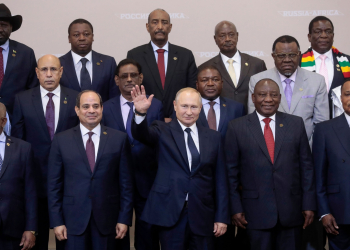Ancient piracy is typified not only by glamour and style, but also a military-like posture where targets are selected and attacks copiously masterminded to get the biggest booty. At the peak of his exploits, Black Sam did not share the West Indies with other pirates. What’s more, visibility was part of the mastery of the art. Often, pirates wish to “own” their marauding routes and will go to every length to stamp-out competition in their domaine reserve – there is never a time to go to sleep or show signs of defeat.
Are there parallels from this trajectory to draw for the Gulf of Guinea?
With the dawn of the New Year came renewed hope and optimism for maritime security in the Gulf of Guinea. By the end of 2017, IMB reported 180 piracy incidents… the lowest number reported since 1995. Headlines boldly announced, “Maritime Piracy hits 22-year low in 2017”; and one could almost hear a resounding applause after reading such captions. If these figures were anything to go by, the shipping industry could heave a sigh of relief, in anticipation of fewer attacks with the beckoning of 2018. But this is far from the truth – numbers are not necessarily what determine risk. On the contrary, fewer attacks may drive-up risk with related consequences than many incidents.
Significant incidents have so far occurred early this year involving the MT Barrett and Marine Express. On 10th January the MT Barrett, an oil tanker, was hijacked off the coast of Benin. The ship, together with its 22 crew members, was released six days after. The terms of release still remain unknown. Then, on 1st February, the Hong Kong-based ship management group, Anglo-Eastern, reported losing contact with the Marine Express. The tanker was later reportedly hijacked at Cotonou Anchorage at 3:30 am along with 22 crew members and 13,500 tons of gasoline on board. It was released on 5th February, amidst contradicting reports on the details of capture and terms of release. Wondering why Benin? Our simple answer is that the country fell as a piracy enclave in 2011.
Again, on February 19, six pirates in a speed boat, armed with AK-47 rifles made repeated attempts to board a crude oil tanker some 25 nautical miles off the Nigerian coast. Although the tanker and its crew were later reported to be safe, these incidents demonstrate the eccentricities Gulf of Guinea piracy – transnational and risk-laden with violent, brazen attacks– all of which are overlaid on weak enforcement, slow response and governance deficits.
Is the Early Year Salute Reminiscent of Gulf of Guinea Piracy?
Interestingly, this has not been the first time that pirates have given the Gulf of Guinea a New Year salute. In Nigerian waters alone, four high-profile incidents were recorded in January 2017, eighteen in January 2016 and another four in January 2015. On the regional scale, some of the most notable hijackings and incidents of 2016 occurred at the beginning of the year; including the hijacking of the product tanker Maximus off the coast of Côte d’Ivoire on 11 February.
The same trend was eminent in 2015. Reports indicated that the year begun with a series of audacious piratical attacks, with 6 people killed and 3 kidnapped by the first week of February alone. For Ghana in particular, the cases of MT Mariam and FV Lu Rong Yuan Yu 917, both of which occurred in January, reigned above all other piratical salutes for the New Year. In the case of FV Lu Rong Yuan Yu 917, the vessel had about twenty-five Ghanaians and two Chinese on board. Over a hellish five-day ordeal, the pirates forced almost all of the crew to jump overboard. One seafarer was brutally stabbed to death and three others drowned. The following month recorded one of the most high-profile incidents for the year – the case of MT Kalamos.
Even in 2014, the daring hijacking of MT Kerala and theft of $8 million in oil cargo off the Angolan coast was a January salute.
Notably, these early incidents every year have added to the unique dynamics of piracy in the Gulf of Guinea and the complexity within which the piracy threat is cast. While the number of recorded incidents may occasionally decline, the reality of insecurity in the region is not necessarily in the figures (as was the case with Somali piracy).
What’s in it for 2018?
The incidents in the early months of this year suggest that contrary to optimistic reports, piracy is in the region is still a threat epitomized by complexities which make risk mitigation difficult. Indeed, there are a number of mutually reinforcing elements that influence piracy dynamics in the region. For instance, the price of oil has always been a significant factor when it comes to Gulf of Guinea piracy, with higher oil prices giving pirates greater motive to launch attacks against oil tankers, and lower oil prices resulting in more cases of kidnapping for ransom as observed in early 2015. Other factors which are difficult to verify but cannot be discounted are the role of complicity and corruption in the DNA of Gulf of Guinea piracy.
For the year 2018, there remains a glimmer of hope shrouded in a myriad of uncertainties. As oil prices promise to stay high in 2018, the early-year-salute may well tarry, with increased attacks against oil tankers and oil carrying vessels – and rippling effects on other vessels. The need for rigorous and urgent measures by both States and maritime regulatory authorities, commensurate with the dynamics of the piracy profile of the region, cannot be over-emphasised. Whatever the case though, the risk to the shipping industry is visible on the radar.
The writer is an Executive Director at Centre for Maritime Law and Security Africa (CEMLAWS AFRICA)
Join GhanaStar.com to receive daily email alerts of breaking news in Ghana. GhanaStar.com is your source for all Ghana News. Get the latest Ghana news, breaking news, sports, politics, entertainment and more about Ghana, Africa and beyond.




